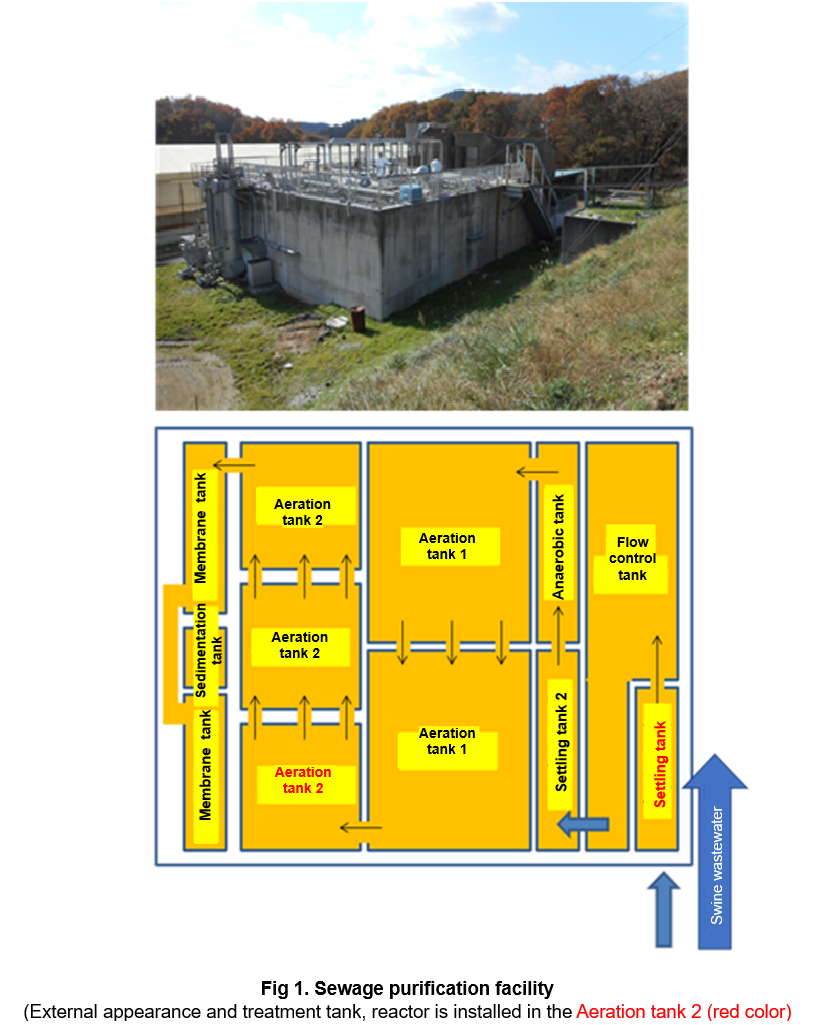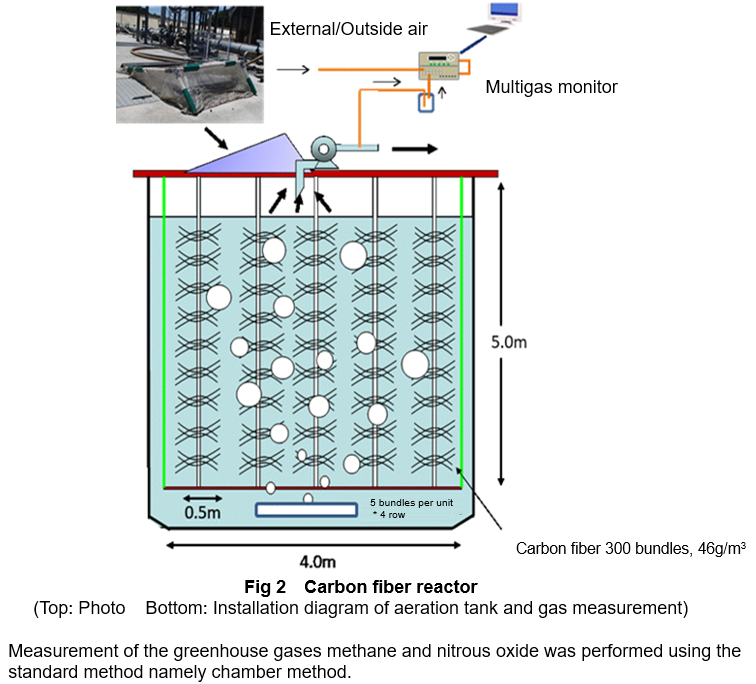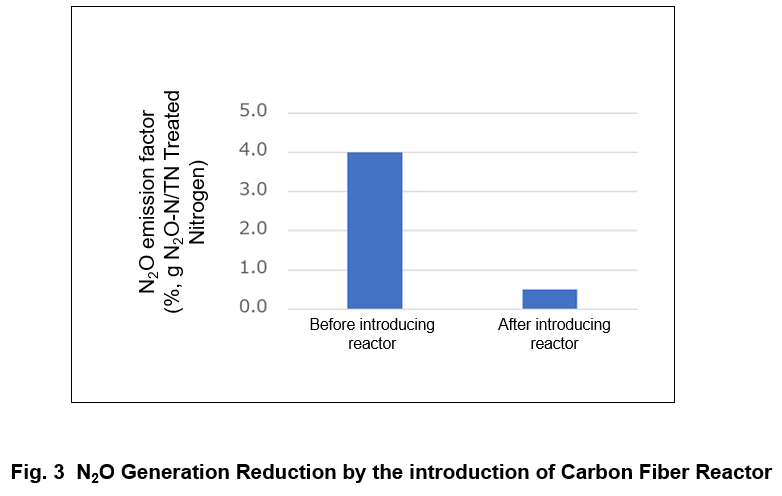NARO
Okayama Prefectural Technology Center for Agriculture, Forestry, and Fisheries, Research
Okayama JA Livestock Co., Ltd
NARO, in collaboration with Okayama Prefectural Technology Center for Agriculture, Forestry, and Fisheries, Research and Okayama JA Livestock Co., Ltd. has demonstrated at the farm facilities that the greenhouse gas emissions can be reduced by approximately 80% in swine wastewater treatment facilities by introducing a carbon fiber reactor we developed. By introducing this reactor to processing facilities nationwide, it is estimated that it can reduce 6 hundred thousand tons carbon dioxide equivalent (CO2-eq) of greenhouse gas emissions annually. This achievement of reduced greenhouse gas emissions will contribute to the sustainable livestock production.
Overview
While the effects of climate change due to global warming become apparent, in case of agriculture also there is a need to reduce greenhouse gas emissions which is considered to be the main cause for global warming. In Japan, among the greenhouse gas emissions from agriculture, most greenhouse gas emissions originate from livestock production. Among them, greenhouse gases generated during the treatment and management of livestock manure such as composting and sewage purification are estimated to account for 10 to 15% of agricultural emissions, and 6.3 million tons of (CO2-eq) per year. Hence technologies are required to reduce these emissions.
Therefore, NARO developed a carbon fiber reactor that can significantly reduce greenhouse gas emissions from swine wastewater treatment facilities in the FY 2015. A demonstration test of this reactor was conducted in the farm facility of around 6000 fattening pigs and confirmed that it could reduce greenhouse gas emissions (mostly nitrous oxide) by about 80%. By introducing this reactor to the existing facilities, we can expect an improvement in the nitrogen removal effect while maintaining the same organic matter treatment capacity as conventional activated sludge treatment methods. It is estimated that the emissions of greenhouse gases can be reduced by 6 hundred thousand tons (CO2-eq) annually by installing this reactor in the wastewater facilities of swine breeding throughout the country.
In the near future, the number of demonstration farms will be increased, improvement and cost reduction of reactor will be promoted. And, we will undertake for the rapid popularization of this technology.
Publications
1) Takahiro Yamashita, Makoto Shiraishi, Hiroshi Yokoyama, Akifumi Ogino, Ryoko Yamamoto-Ikemoto, Takashi Osada 2019. Evaluation of the nitrous oxide emission reduction potential of an aerobic bioreactor packed with carbon fibres for swine wastewater treatment. Energies 12:1013. https://doi.org/10.3390/en12061013.
2) Takashi Osada, Makoto Shiraishi, Teruaki Hasegawa, Hirofumi Kawahara 2017. 6 Methane, nitrous oxide and ammonia generation in full-scale swine wastewater purification facilities. Frontiers of Environmental Science & Engineering 11: 10. https://doi.org/10.1007/s11783-017-0933-7.
Reference Information







